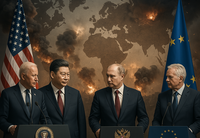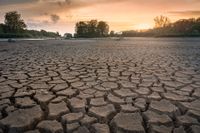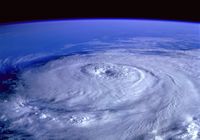
Global Crisis Index - GCI
Global Risk and Crisis - Defined. Measured. Understood.



In an increasingly interconnected and dynamic world, global risks are becoming ever more complex and multifaceted. The past years have vividly demonstrated how rapidly and unexpectedly crises can arise – from pandemic outbreaks, mass migration and geopolitical tensions to climate changes and technological disruptions. Against this backdrop, it is more crucial than ever to develop a comprehensive understanding of the various risks to which our societies, economies, and the environment are exposed.
Risk Identification and Analysis
It evaluates and quantifies the most pressing global risks, including economic instability, environmental crises, geopolitical conflicts, and technological disruptions.
Decision-Making Support
By presenting data-driven insights, the report assists governments, corporations, and organizations in developing preventive strategies to mitigate the impact of crises.
Resilience Enhancement
It highlights areas where global and national resilience efforts need to be strengthened, ensuring preparedness against emerging risks.
Long-Term Forecasting
The report not only assesses current crises but also projects future trends over different time horizons, typically two to ten years, helping stakeholders anticipate potential risks.
Global Cooperation Framework
Given the interconnected nature of global risks, the report advocates for collaborative international responses, ensuring more effective governance and crisis management.
The Global Crisis Index Report aims to contribute to this understanding. Our goal is to provide policymakers, business leaders, and societal stakeholders with well-founded information and analyses to take preventive measures and enhance resilience. The inclusion of diverse perspectives ensures a well-rounded approach to crisis identification and management.
The report is the result of collaboration among leading experts and institutions worldwide. It integrates insights from global risk analysts, policymakers, and industry specialists to provide a comprehensive assessment of emerging threats.
The report examines both short-term threats and long-term challenges, offering a structured framework for decision-makers. It highlights the necessity for global cooperation in addressing complex risks, emphasizing the interconnected nature of today’s crises.
All about global crisis over the world. Wars, pandemics, economic problems
Climate change is rapidly destroying the basis of existence and livelihood of the entire human race. The effects are already visible in many world regions and can be quantitatively proven by science. In many regions of the world, climate change and drought are already leading to a lack of fertile habitat and making it impossible for people to survive.
Many countries suffer from high national debt, bloated state apparatuses, and a weakening economy. The risk of economic crises with pronounced recessions is always high and latent. In addition, there is an ever greater loss of confidence in the FIAT monetary system and the threat of currency crises with inflationary or deflationary developments. These developments are accompanied by a massive loss of confidence in politics and helpless governments.
Global migration movements are being exacerbated by economic imbalances and ecological disasters, and the pressure to migrate to countries and continents with better living conditions is rapidly increasing. Social problems increase in the countries of immigration, and only the weakest remain in the countries of emigration. Ultimately, migration expresses increasing distribution and displacement struggles for living space, resources, and capital.
Population growth is increasing enormously. Since 1800 (1 billion), the world’s population has increased more than eightfold by 2022 (8 billion). An increase to up to 12 billion people by 2100 is considered likely. The massive population growth leads to increased demand for resources and living space. More and more people are fighting for dwindling living space and resources.
Natural and non-renewable raw materials are consumed irretrievably daily. Due to the growth of the world’s population and increasing industrial production, the consumption of raw materials continues to rise. The demand for raw materials will continue to rise until natural reserves are completely exhausted. This results in increasing wars over the remaining raw materials and resources.
The various threats reinforce each other and lead to a ruinous downward spiral. There is a high probability that large parts of the world will no longer be habitable while the world’s population continues to grow massively. This, in turn, will lead to increased migration to those parts of the world where survival is still possible, exacerbating social conflicts and ecological emergencies. All these developments ultimately lead to a drastic increase in social conflicts, wars, and terrorism.

Hunger around the world causes instability in regions, leads to migration, fuels conflicts, and has a direct impact on our economy.







